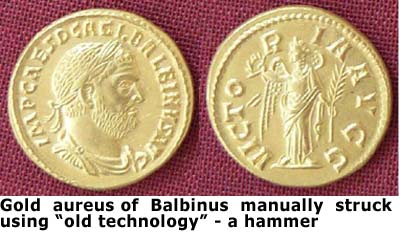 A small group of enthusiasts from different countries are trying to draw the attention of the ministries of culture, the national and international institutions of justice, and police groups to the painful subject of the production and sale of ancient coin fakes. This problem stays in the shadows and there is no trend towards enlightenment. The real reasons for this secrecy are known to few. Although public, the secrecy itself remains a secret. Some secrets are very well hidden. What is the volume of trade in fakes and who are the main active and passive participants in forgery. Who monitors the process but stays silent and does not announce his findings, and why not? A small group of enthusiasts from different countries are trying to draw the attention of the ministries of culture, the national and international institutions of justice, and police groups to the painful subject of the production and sale of ancient coin fakes. This problem stays in the shadows and there is no trend towards enlightenment. The real reasons for this secrecy are known to few. Although public, the secrecy itself remains a secret. Some secrets are very well hidden. What is the volume of trade in fakes and who are the main active and passive participants in forgery. Who monitors the process but stays silent and does not announce his findings, and why not?
Reasons for not exposing the production and trade of fakes as a serious problem to the collecting public are the limited number of genuine coins, the coin market’s desire for high profits, the involvement of unofficial and secret national movements, the role of rare coins to secure (or as collateral for) investments, and outright fraud. It is hard to detect and prove that coins are fake once they are deposited in banks.
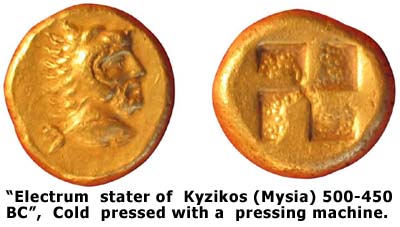 Not everyone involved has the same point of view. There are both discouraging and encouraging attitudes towards the production and trade in fake ancient coins and artifacts. It is an old Bulgarian saying: “when one player wins from fraud, another certainly loses.” One thing is certain – except for the players all the rest of us lose. If this is not felt now the negative effects will become significant in the near future. Not everyone involved has the same point of view. There are both discouraging and encouraging attitudes towards the production and trade in fake ancient coins and artifacts. It is an old Bulgarian saying: “when one player wins from fraud, another certainly loses.” One thing is certain – except for the players all the rest of us lose. If this is not felt now the negative effects will become significant in the near future.
In the colorful mixture of people, companies and institutions connected to numismatics as a science, hobby and business and scattered all over the world it is almost impossible to define and follow strict rules. There is a fragile symbiosis between these groups and no one knows how long there will be a balance. The laws of supply and demand do not apply to the trade in ancient coins. Why? First because of the increasing demand for such valuables and the second the limited availability of genuine coins. The demand consistently grows especially in the wealthy societies where quality of life is improving and there is more disposable income for hobbies and luxury goods. The number of ancient artifacts (including coins) is constant. Furthermore, this number drops due to various reasons like wars, natural cataclysms, destruction because of negligence (or ignorance) as well as many other destructive human activities. Considering the high profit in the coin trade we can imagine what the motives of the fake coin producers and dealers are. The lack of originals is compensated with well-made fakes.
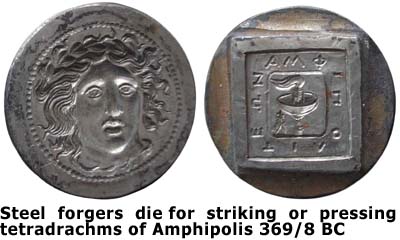 The production of forgeries of coins and other ancient artifacts started in Europe right after the interest of kings and societal elites, influenced by the Renaissance, emerged. For a long time replicating, copying and falsifying was mainly a European activity. At first the center of such activities are the Italian master engravers. An excellent example is Giovanni Cavino (1500-1570) and his followers. With time, their “products” were well studied and published and can now be bought as collectibles. Later the true ancient coin forgers appear. They mark the so called “romantic” period when single copies of valuable coins were produced. Among the best examples is Becker, who worked in the end of 18th century through The production of forgeries of coins and other ancient artifacts started in Europe right after the interest of kings and societal elites, influenced by the Renaissance, emerged. For a long time replicating, copying and falsifying was mainly a European activity. At first the center of such activities are the Italian master engravers. An excellent example is Giovanni Cavino (1500-1570) and his followers. With time, their “products” were well studied and published and can now be bought as collectibles. Later the true ancient coin forgers appear. They mark the so called “romantic” period when single copies of valuable coins were produced. Among the best examples is Becker, who worked in the end of 18th century through
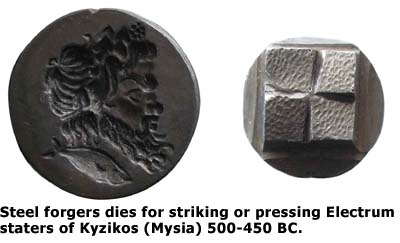 the first quarter of 19th century. Christodoulos and a great but little-known Bulgarian forger known as Doren forged in the first quarter of the twentieth century. Many of Doren’s gold staters and tetradrachms are not yet recognized as false. The situation went so far that a notable American numismatist said during the 1960s that half of the ancient coins bought in the USA were fake. It is not clear if this was so but probably there is a high percentage of truth. Yet the production of fakes was acceptably small and regarded with curiosity rather than fear. The real problems appear in the beginning of the 1970s. It’s clear that the “romantic” period is over. the first quarter of 19th century. Christodoulos and a great but little-known Bulgarian forger known as Doren forged in the first quarter of the twentieth century. Many of Doren’s gold staters and tetradrachms are not yet recognized as false. The situation went so far that a notable American numismatist said during the 1960s that half of the ancient coins bought in the USA were fake. It is not clear if this was so but probably there is a high percentage of truth. Yet the production of fakes was acceptably small and regarded with curiosity rather than fear. The real problems appear in the beginning of the 1970s. It’s clear that the “romantic” period is over.
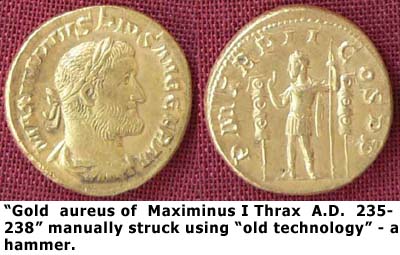 Countless workshops armed with modern technologies have appeared, aggressive and thirsty for quick profit. Workshops are hired by various organizations with shadowy goals which arrange production, distribution to markets, and which make up necessary stories to make everything sound authentic and forge documents of origin and appraisal. Counterfeits became especially dangerous during the last two decades of the twentieth century when many forgers from Asia joined the business. There is very aggressive participation of many Chinese and Indian “workshops”. Silly as it may sound a large number of “ancient Greek and Roman coins” are made in Asia. Countless workshops armed with modern technologies have appeared, aggressive and thirsty for quick profit. Workshops are hired by various organizations with shadowy goals which arrange production, distribution to markets, and which make up necessary stories to make everything sound authentic and forge documents of origin and appraisal. Counterfeits became especially dangerous during the last two decades of the twentieth century when many forgers from Asia joined the business. There is very aggressive participation of many Chinese and Indian “workshops”. Silly as it may sound a large number of “ancient Greek and Roman coins” are made in Asia.
 According to my research the forgers do not sell fakes directly to collectors. Usually they produce and wait for dealers to visit them. There are cases when they produce a particular series ordered by a dealer client. Rarely do the master engravers themselves mask their products to make them deceptive to collectors. Engravers are vulnerable. Usually it is known who they are and where they are located. If they try to cheat a client directly they can easily be found. There is a new segment in the game of cheating collectors. After the coins or artifacts are bought from the producer they are additionally processed in other workshops specialized in aging, patinating, etc. The best in this business are artisans who are experienced in processing genuine archaeological material. A lot of experience is accumulated during official work with genuine materials and some of the processors achieve perfection. They can cover a fake coin with natural components removed from genuine ones so that it is almost impossible to be recognized as false unless destructive methods are used. Very often poor slugs are selected from illegal digs. These are sent to forgers who strike fakes on them. According to my research the forgers do not sell fakes directly to collectors. Usually they produce and wait for dealers to visit them. There are cases when they produce a particular series ordered by a dealer client. Rarely do the master engravers themselves mask their products to make them deceptive to collectors. Engravers are vulnerable. Usually it is known who they are and where they are located. If they try to cheat a client directly they can easily be found. There is a new segment in the game of cheating collectors. After the coins or artifacts are bought from the producer they are additionally processed in other workshops specialized in aging, patinating, etc. The best in this business are artisans who are experienced in processing genuine archaeological material. A lot of experience is accumulated during official work with genuine materials and some of the processors achieve perfection. They can cover a fake coin with natural components removed from genuine ones so that it is almost impossible to be recognized as false unless destructive methods are used. Very often poor slugs are selected from illegal digs. These are sent to forgers who strike fakes on them.
 A very dangerous trend is the collaboration of specialized forgers from different parts of the world. For example Bulgarian-made coin dies are ordered by local or international clients. Many are exported to the USA and Canada where fake coins are struck. A very dangerous trend is the collaboration of specialized forgers from different parts of the world. For example Bulgarian-made coin dies are ordered by local or international clients. Many are exported to the USA and Canada where fake coins are struck.
|